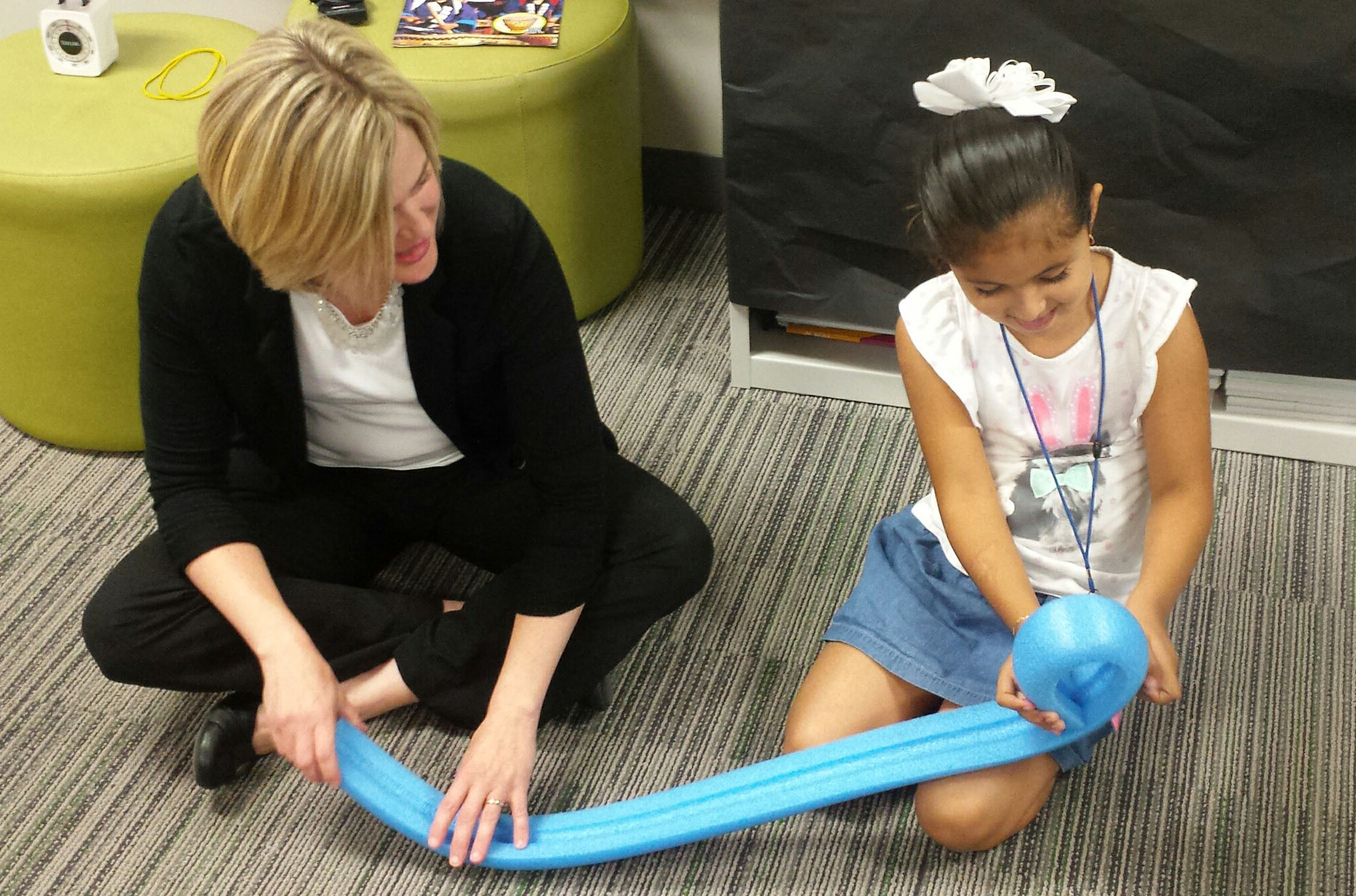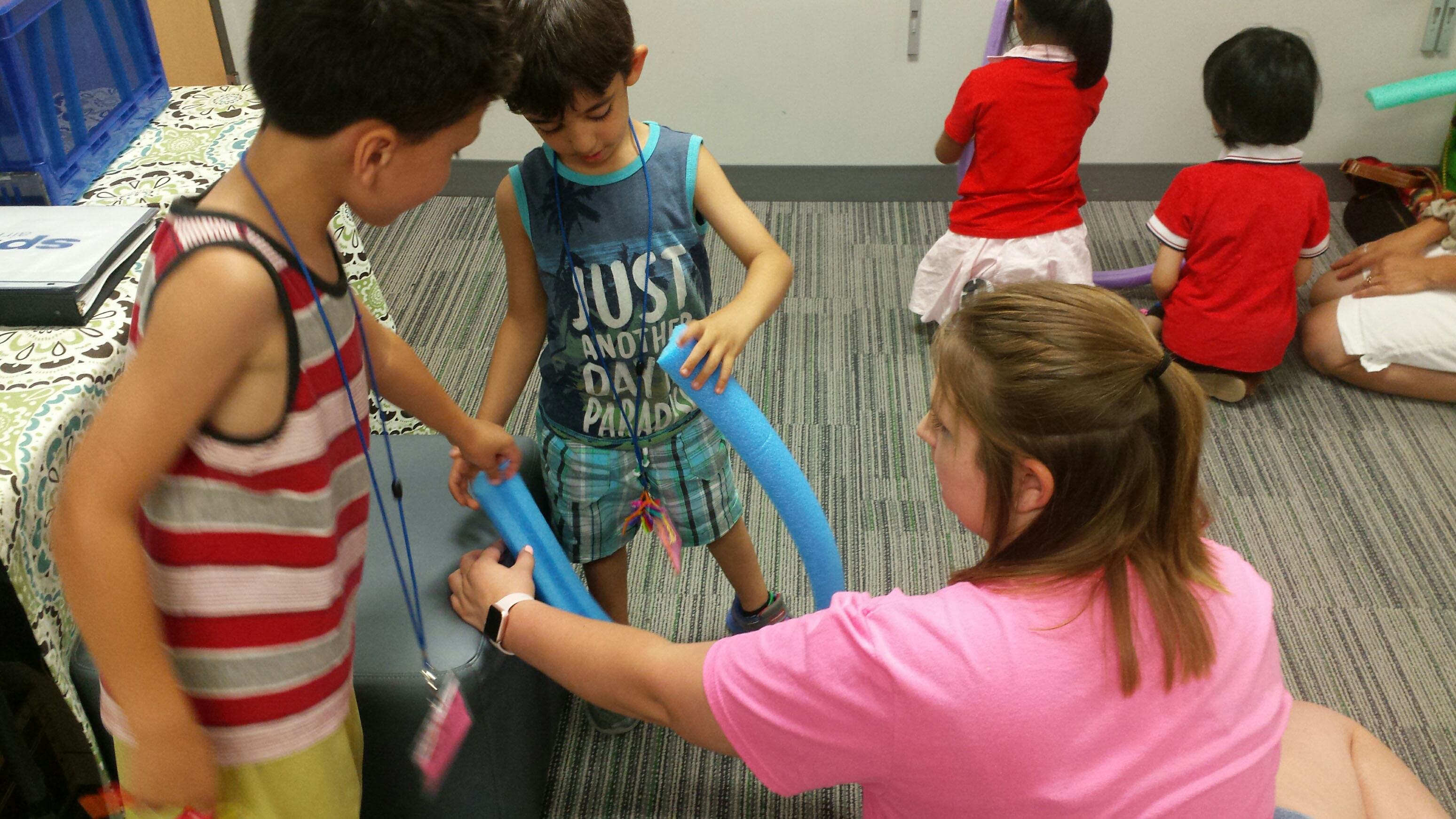STEM-Lit to Go! introduces science, math and engineering concepts through literature. Students then experiment with the concept through hands-on activities and play. Video by Dave Olson
AMES, Iowa – Sara Nelson did not even have to ask the question. She only had to look around the room at all the smiles or listen to the flurry of ideas students were sharing to know the science and literature program she developed was effective.
“We’ve had everything from cheering to screaming to very high levels of excitement, and that was what we were going for,” said Nelson, a postdoctoral research associate at Iowa State University with dual appointments in the School of Education and Iowa 4-H Clover Kids.
On this particular day, Nelson was visiting Little Cyclone Camp at Edwards Elementary School in Ames, one of 11 sites across the state piloting STEM-Lit to Go! this summer. As the name suggests, STEM-Lit to Go! combines science, technology, engineering and math concepts with literature. The curriculum includes 12 lessons designed for students in kindergarten through third grade, and incorporates Next Generation Science Standards and Common Core literacy standards, Nelson said.
The STEM-Lit to Go! curriculum includes four main components to help teachers meet these objectives. For example, the new science standards require active learning. That means lesson plans should allow children to plan and conduct investigations around a variety of science concepts, Nelson said. Another requirement is to teach students about engineering, which is new for many early childhood educators.
“Early childhood educators cannot know everything about physics, chemistry and all these different fields,” Nelson said. “The program really helps support educators who are shifting to more STEM or literacy experiences and are a little nervous about the transition. It gives them support and hopefully energy, which in turn helps children be excited about the science.”
Learning in disguise

Sara Nelson works with a student to construct a model roller coaster using a pool noodle. (Larger image)
An important feature of the program is STEM-based activities that encourage learning through play. Nelson says teachers first introduce the science concept to students by reading a fiction book. Students then experiment with the concept through a hands-on activity or play. For one of the lessons, the teacher reads “Curious George Goes to a Chocolate Factory,” and then gives students a collection of parts to rebuild a chocolate machine Curious George “damaged” during his visit.
Following the activity, the teacher reads a nonfiction book – in this example, “Cocoa to Chocolate” – to help students attach what they are learning to the text, Nelson said. A final take-home lesson allows students to see how science and engineering applies to their daily lives. Nelson says students are more likely to learn and retain the information when they have the opportunity to explore through doing.
“One of our main goals was to create an activity that is so engrossing that the children don’t want to stop,” Nelson said. “If you let students dig in, ask and answer their own questions and direct their own learning, they set their sights so high that amazing things can happen.”
Assessment tasks are embedded into the program so educators can easily determine if children are grasping the concept. Students may draw a picture to demonstrate comprehension or graph answers to questions about a science concept or process, Nelson said. For a lesson on inventions, students evaluate if the product is safe, fun and fills a need by placing a sticky note, with their name, under their answer. Nelson says educators quickly see what children are thinking and use that in the lesson.
4-H ideal for STEM outreach
Nelson’s dual appointments created a natural partnership, combining the School of Education’s research and expertise with 4-H Clover Kids outreach and programming to some 9,000 children. Starting this fall, Clover Kids will implement STEM-Lit to Go! statewide. Nicole Hanson, Clover Kids specialist, says 4-H and ISU Extension and Outreach staff and volunteers will also offer the program through partnerships with schools, libraries and other organizations to reach even more children.
“We’re increasing the amount of STEM and literacy education children receive to help bridge the achievement gap,” Hanson said. “And we’re providing quality, research-based curriculum that staff and volunteers can successfully implement to give the children a quality experience.”
Initial analysis of the data collected from the pilot programs is encouraging. Students are highly engaged, they’re learning the science and engineering concepts and the program is easy for educators to implement, Nelson said. The results certainly reflect what Nelson and Hanson see and hear when they observe a STEM-Lit to Go! lesson.

Students experiment with pool noodles to design model roller coasters. (Larger image)
“We hear comments like, ‘What if I tried this instead?’ and ‘This is so exciting!’ We’ve had a great reaction not only from the youth, but from the facilitators as well,” Hanson said. “They’ve made comments like, ‘If I had this kind of science programming when I was younger, I would have loved science,’ so it’s been exciting.”
Based on the data and feedback collected, Nelson will make adjustments as needed. She is already developing a second series of STEM-Lit to Go! lessons that will include Iowa authors and science concepts with a connection to the state. Having the opportunity to work with educators and benefit young minds not only demonstrates Iowa State’s land-grant mission, but also motivates Nelson.
“The outreach is why I do what I do,” Nelson said. “I want to know that what we’re creating is something children really want to do and they’re learning from it.”